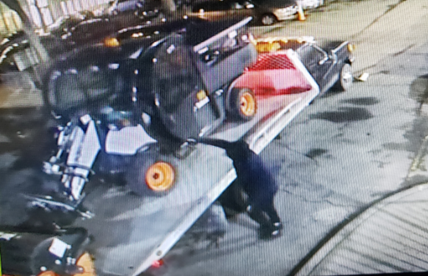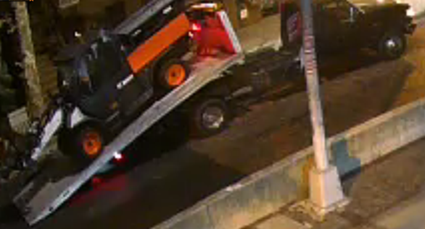Some neighborhoods have 100x shelter beds than others; 3-out-of-4 neighborhoods with no shelters are predominantly white. Waste transfer stations, parks, and social services are also inequitably distributed
Audit also finds that the City fails to provide a basic level of transparency about concentration of services or public outreach as required by the City Charter
While New York City has a Charter mandate to locate City services and facilities equitably, a new audit and report from New York City Comptroller Brad Lander found that the City unevenly distributes City facilities, while keeping critical data on the concentration of services in neighborhoods unavailable and failing to produce mandated analyses of neighborhood impact.
Adopted in the 1989 City Charter Revision, “Fair Share” provisions require the City to make a concerted effort to ensure that communities are both getting their fair share of amenities like parks and libraries and doing their fair share to confront citywide problems like homelessness. When facilities are sited unfairly, the burdens and benefits of those City facilities are unevenly distributed, exacerbating racial and economic disparities.
“New York City’s wellbeing rests upon an extensive array of municipal services that should be sited equitably, but our office found that it fails to live up to its ‘Fair Share’ obligations, said Comptroller Brad Lander. “Some neighborhoods have far more than their share of homeless shelters and waste transfer sites, and the differences are often along lines of race and income. As we tackle issues from housing affordability to climate change while building a compassionate and inclusive city, the City’s siting decisions cannot be driven by not-in-my-backyard politics and path-of-least-resistance planning, which solidifies and deepens racial and economic disparities.”
The Comptroller’s Office review consisted of both an audit of Fair Share statements over the past 5 years, and a geospatial analysis of a wide range of City facilities.
The audit analyzed 170 Fair Share (or Article 9) statements – these must be submitted to support the siting of City facilities that will be run through contracts with private providers, such as homeless shelters – and siting decisions made between Fiscal Year 2018 through 2022. Of the 170 Article 9 statements, 166 were for Department of Homeless Services (DHS) facilities. Auditors found significant noncompliance with the Charter’s Fair Share requirements:
- 67 (40%) were for shelter sites in community districts that already had a high concentration of shelter beds to the population living in the district.
- Only one (0.5%) included an assessment of the facility’s impact on the neighborhood.
- According to the City Charter, an annual Citywide Statement of Needs (SON) must identify all new and significantly expanded City facilities proposed by agencies for the next two fiscal years. DHS listed none of the 166 shelter sites in the SONs by borough and community district (CD); DHS only listed 6 sites as ‘to be determined.’
Initially, the City only gave 28 Article 9 statements to auditors; neither the Department of City Planning (DCP) nor the Mayor’s Office tracked or maintained copies of all Article 9 submissions. Of the 28 Article 9 statements submitted, auditors found that agencies did not adequately consider that some neighborhoods have a disproportionate number of residential facilities. The City aimed to place 18 out of the 28 sites (64%) in CDs with a high shelter Bed to Population (BTP) ratio.
- Manhattan CD 11 (East Harlem, Harlem, Randalls Island, Wards Island) already had 17 shelters.
- Two of the Article 9 statements proposed new shelters within Bronx CD 6 (Bathgate, East Tremont, Belmont, West Farms), which would bring the total number of shelters up to 24.
- Brooklyn CD 3 (Bedford-Stuyvesant, Stuyvesant Heights, and Ocean Hill) had 16 shelters.
Auditors found no evidence that 14 of the 28 Article 9 statements were submitted to community boards, in spite of requirements that DHS hold at least one public information session for new homeless shelters.
DCP has not updated the BTP ratio since 2015, leaving it outdated and inaccurate. According to the Fair Share Criteria, DCP must publish an annual index of beds per thousand residents by type of facility and total number in each CD. The City has not reevaluated the Fair Share Criteria since 1995, neglecting significant shifts in technology and services such as universal Pre-K and 3K.
These findings are especially relevant at this moment, as New York City welcomes upwards of 100,000 asylum seekers, and the housing affordability crisis continues to worsen. Siting new facilities is critical to meeting the City’s Right to Shelter obligation.
To evaluate the current make-up of facilities across the City, the Comptroller’s office also took a wider view of Fair Share through a geospatial analysis. The analysis found:
- Three facility types are generally distributed fairly—childcare and early childhood education facilities, fire stations, and police precincts.
- Four facility types are distributed unfairly—parks, waste transfer sites, homeless shelters (including sanctuary sites and HERRCs) and social services (including mental health centers and substance use disorder treatment programs).
- Homeless shelters are heavily concentrated with some communities taking on 100 times more shelter beds than others. Three-out-of-the-four community districts that have no shelters are predominately white. To date, the City has not produced Fair Share analyses for any of the City’s 20 HERRCs or 129 sanctuary sites.
- Waste transfer sites with high volume of truck traffic, greenhouse gas emissions, particulate matter, and noise are more likely to be in communities with a higher percentage of people living below the poverty line. 73% of the total capacity for waste disposal is allocated to stations in five CDs in Brooklyn, Staten Island, and the South Bronx.
- Neighborhoods with significant Asian populations in Eastern Queens and Southern Brooklyn have less access to parks, which are essential for physical, mental, and social health as well as protect from the impacts of extreme heat.
- Social services, such as mental health centers and substance use treatment programs, are much more likely to be in neighborhoods with a higher percentage of people living below the poverty line. Manhattan CDs 10 and 11 (Harlem & East Harlem) are doing far more of their fair share than the rest of the borough.
Comptroller Lander continued, “Fairness must be embedded in how we build our city, share opportunities, and rise to challenges. That begins with a commitment to basic public transparency, which the City has long ignored. Failing to attend to fairness and transparency erodes public trust and makes it harder to meet our collective needs.”
Based on its review, the Comptroller’s Office recommends that the City:
- Establish clear, centralized City oversight over Fair Share compliance
- Improve and regularly update the Fair Share Criteria, including the BTP ratio
- Improve public access to information on sitings, facility capacity, and concentration
- Reform the Citywide Statement of Needs
- Prohibit unfair sitings in oversaturated districts
- Clarify that Fair Share should be applied to City facilities sited through emergency procurement
“Building a more equitable city requires a fair distribution of resources and development. We cannot continue to allow certain communities to maintain exclusionary boundaries; nor can we continue to shortchange historically marginalized communities that need long overdue investment in public infrastructure and facilities,” said Emily Goldstein, Director of Organizing & Advocacy at the Association for Neighborhood and Housing Development. “The lack of transparency and accountability revealed in the Comptroller’s report is further evidence of the urgency to fundamentally transform New York’s approach to planning and investment by prioritizing the needs of BIPOC, immigrant, homeless, and low income New Yorkers.”
“New York needs more green spaces and Fair Share is supposed to ensure that by requiring the City to make a coordinated and comprehensive effort to ensure that all communities are getting equitable access to parks. Parks and greenspaces are critical infrastructure that needs to be maintained and adequately funded that is why NY4P calls for 1% of the city budget to be allocated for parks. Our parks help improve the resiliency of our communities and offer New Yorkers so many benefits. New Yorkers for Parks hopes the Comptroller’s audit outlining the major disparities in critical infrastructure like parks drives the urgency to fully fund our parks system, building more parks and open spaces, and empowers our communities with fair and equitable access to parks,” said Adam Ganser, Executive Director for New Yorkers for Parks.
“The Comptroller’s finding that environmental ‘goods’ like parks and environmental ‘bads’ like waste transfer stations are far from equally distributed in New York City is disappointing. Mayor Adams and the City Council have immediate opportunities to correct these ongoing injustices. For example, we should be rapidly constructing composting and recycling facilities throughout the city to lessen the amount of garbage being trucked in and out of the most environmentally overburdened communities” said Justin Wood, Director of Policy at New York Lawyers for the Public Interest.
“It is outrageous that the Comptroller’s analysis found that waste transfer stations are concentrated in low-income communities and that the City’s own Waste Equity audit found that 75% of the City’s average daily throughput of waste is concentrated in four community district of color in SE Queens, North Brooklyn, and South Bronx – still. For over 30 years – and with five different NYC mayors – NYC-EJA, our members and I have fought for a fairer and more sustainable solid waste management system that does not disproportionately harm Black and Brown New Yorkers. From the 2006 Solid Waste Management Plan, to the 2018 Waste Equity Law to the 2019 Commercial Waste Zones Law, we have fought for and have been promised a reduction of this capacity and the resulting negative health impacts associated with the voluminous waste-related truck traffic – yet this insidious expression of environmental racism persists. Environmental justice delayed is justice denied – we call on the Adams Administration and City Council to honor past commitments to Black and Brown New Yorkers long burdened by our City’s solid waste system,” said Eddie Bautista, Executive Director for NYC Environmental Justice Alliance.


